Inside Sting’s Last Match

SI.com’s Week in Wrestling is published every week and provides beneath the surface coverage of the business of pro wrestling.
An inside look at Sting’s last match
As Darby Allin made his crash landing on Sunday, descending approximately twenty feet from the top of a ladder onto a sheet of glass, which rested atop an array of steel chairs, Jim Ross summed up the moment quite succinctly.
“For the love of God, what have we seen?” he asked, only moments after shards of glass scattered and soared through the air. While JR isn’t on the headset as often as he once was, he nailed that call.
Darby Allin goes through the glass!
— All Elite Wrestling (@AEW) March 4, 2024
Order #AEWRevolution on PPV right now!
🇺🇸: https://t.co/MpmTCyHt8n
🌐: https://t.co/Bc4ZSSvvNC@Sting | @DarbyAllin | @youngbucks pic.twitter.com/Ex87K3GBRD
Sting retired this past Sunday, wrestling the final match of his iconic career beside Darby Allin at Revolution against The Young Bucks. And to the credit of all four men involved, it was a spectacular end to an unforgettable career.
While wondering if Allin has a death wish–later this month, he is planning to climb Mount Everest–the Bucks seized a two-on-one advantage against Sting. But the sides were evened out when Allin miraculously returned, and Sting caused the faithful at the Greensboro Coliseum to erupt when he locked the Bucks’ Matthew Jackson in the Scorpion Deathlock for the victory.
Contents
It is a long-standing wrestling tradition that a retiring wrestler goes out on their back. In other words, it is customary to lose your last match.
That may be tradition, but the powers-that-be in AEW are making their own rules.
Speaking with a multitude of people involved in the match and behind-the-scenes, the match went almost exactly as planned. There was a little room left for improvising, which is standard. Yet nearly everything came off exactly how it was hoped to come out. And it all worked in picture perfect form. Despite being only weeks away from turning 65, Sting looked like his old self one last time.
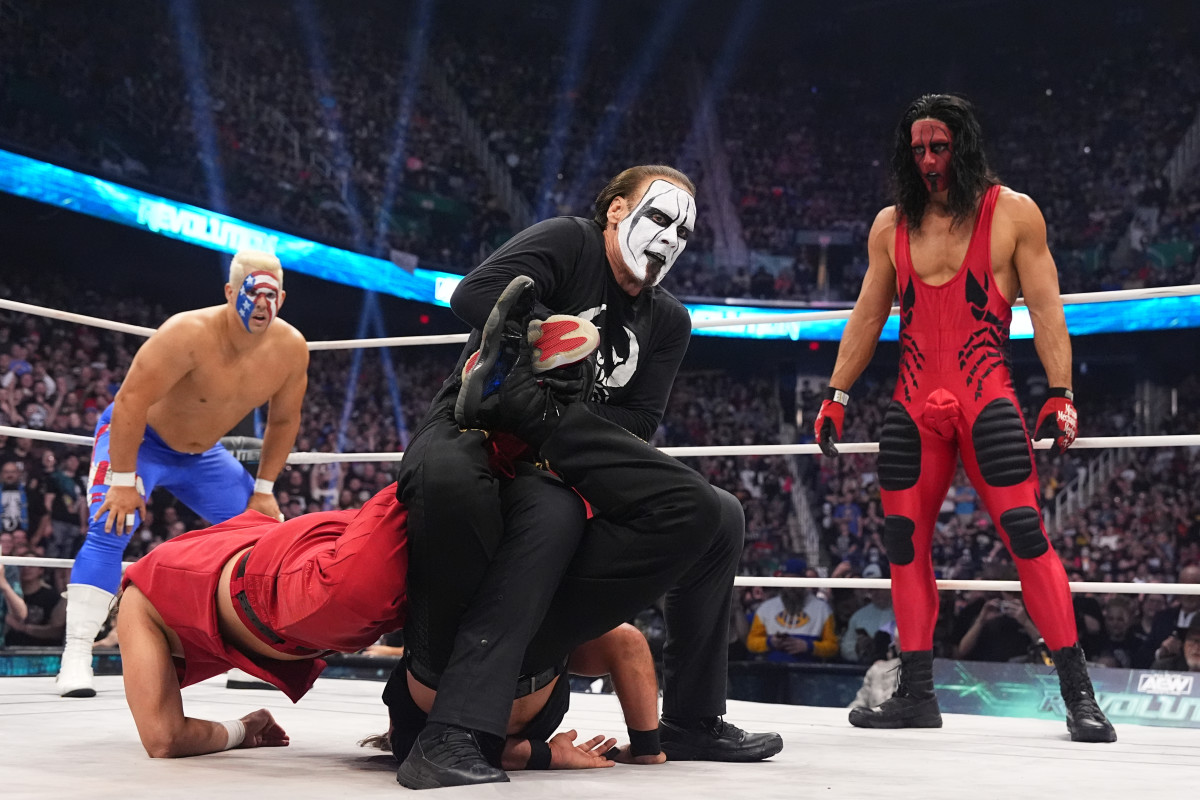
Behind closed doors, there was plenty of discussion about the direction the match should take. But the goal was to give Sting the match he wanted, and ultimately, that is what was presented.
While the Bucks’ Matt and Nick Jackson quieted critics with their performance, the online vitriol has been directed at Darby.
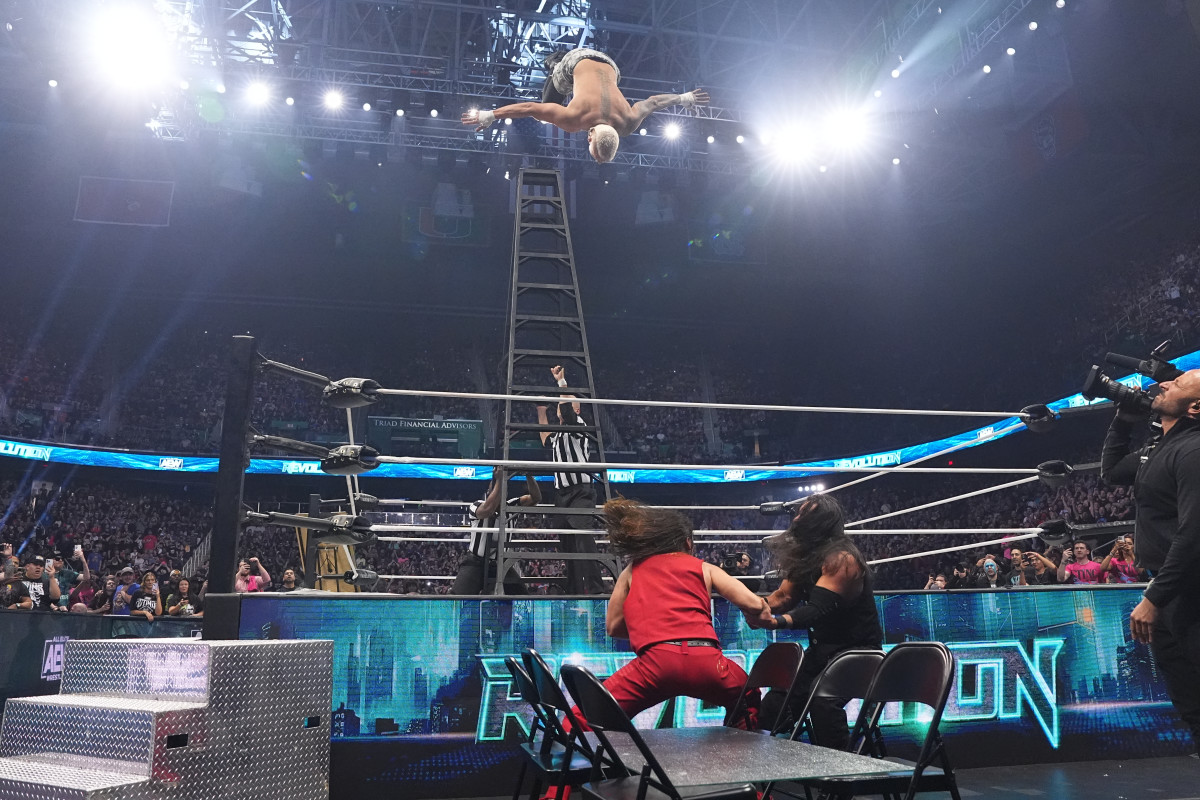
Unquestionably, the swanton off the ladder was excessive. Adding to an extremely dangerous spot is that glass, clearly, is unpredictable. But, multiple people confirmed, that was the one spot Darby wanted above all. There was a Plan B with a different finish in the event he could not return to the match, which turned out to be no more than a precaution.
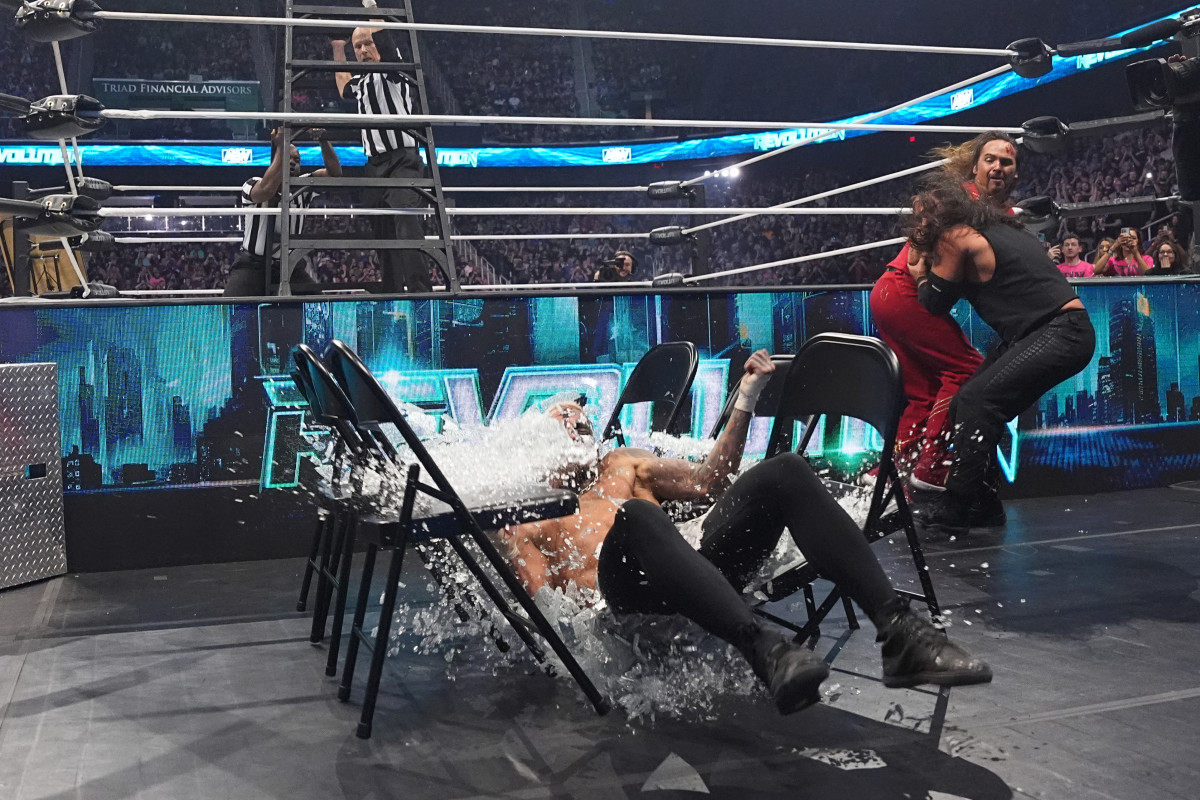
Once it was determined that Darby would make the jump, safety measures were applied. A rehearsal occurred earlier than usual in the day, and a stunt coordinator instructed how to place the items and reviewed the proper protocols. There were also nearby doctors anticipating the spot, and they were on high alert. And had Darby not been able to return to the match, the Bucks were prepared to call an alternate finish.
That was a spot that would not be on display in mainstream American wrestling anywhere other than AEW. The freedom to create is a significant selling point for Tony Khan’s promotion–most notably enticing Bryan Danielson away from WWE–and it was on full display in Sting’s last match.
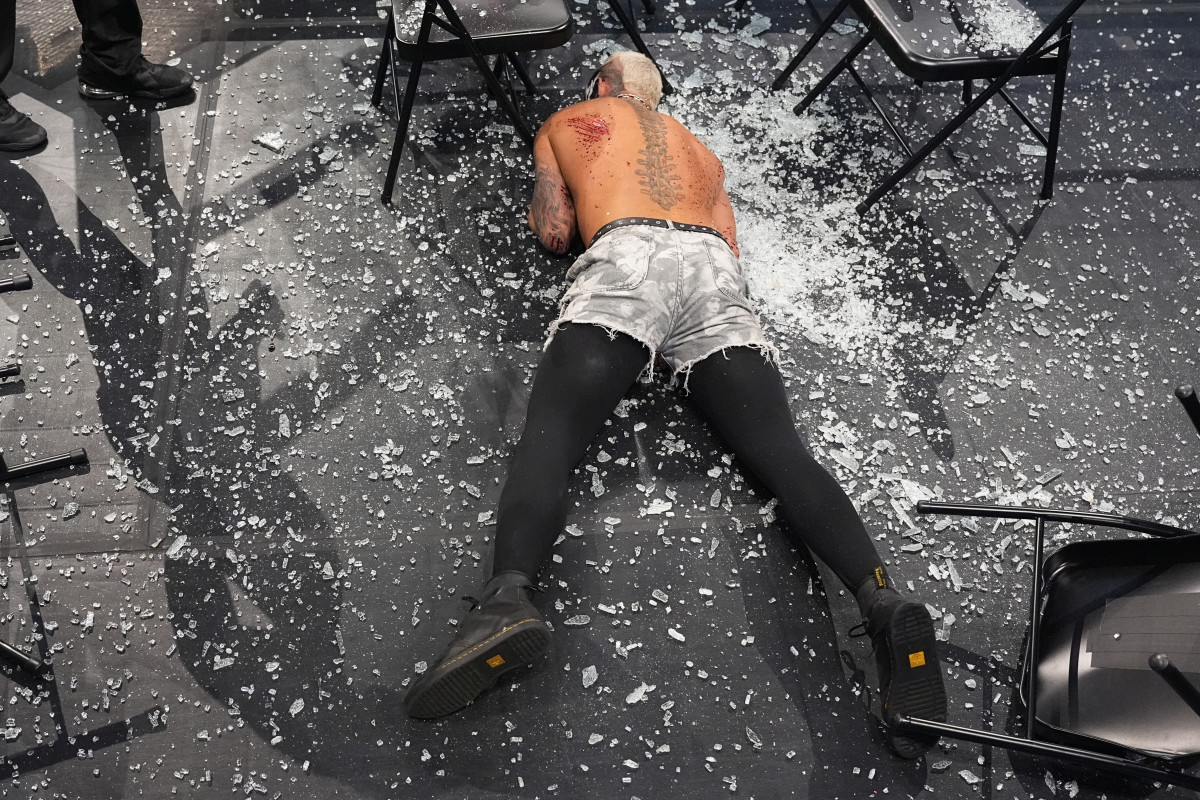
As for the commentary team, Jim Ross’ call sounded organic for a reason. There were rumblings and rumors of outrageous spots, which were only amplified after word spread from the early rehearsal, but those on the broadcast were not told what to expect. Only a small group of people even knew the finish, which is what Sting wanted.
Considering Sting won, the finish was unique. The person retiring traditionally ends their career in defeat. But for those involved in the construction of the match, including CEO/GM/Head of Creative Tony Khan, it was imperative that Sting win.
One of the only dissenting voices about the finish was Sting. He preferred to give the moment and momentum to the Bucks, who he holds in extremely high esteem. But that simply was not going to happen as Khan and the Bucks, who are Executive Vice Presidents in the company, all firmly believed that Sting should end his career with a victory.
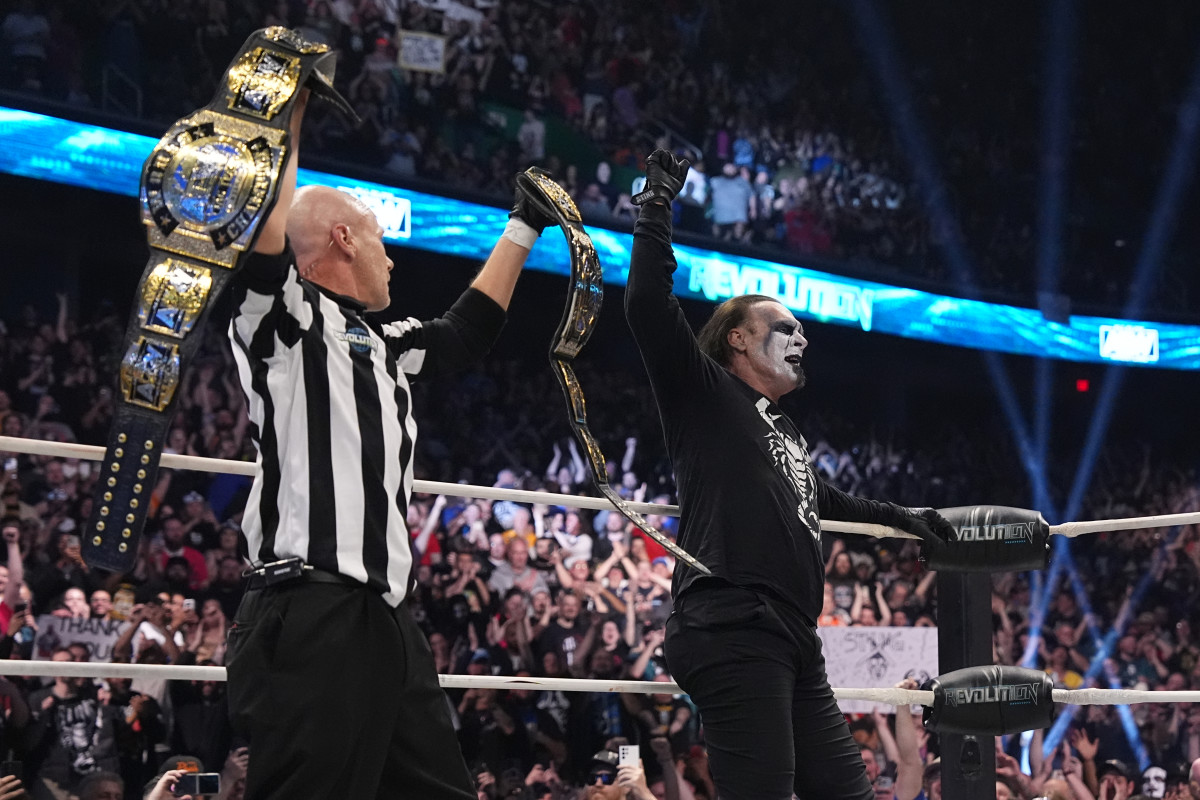
After Sting’s remarkable run in AEW, all parties ultimately agreed that the circumstances called for a beautiful ending. If anyone in wrestling deserved to go out in celebratory fashion, with parallels to the finale of a great sports film, it was Sting. This was the match that Bret Hart never had–and the same can be said for Hulk Hogan, Randy Savage, Andre The Giant, Kurt Angle, and countless other legends. The only retirements that were equal or better to this were the retirements of Ric Flair and Shawn Michaels, but both of those ultimately became preludes to their return.
Khan, the Bucks, and Sting ultimately agreed that a fun, happy ending would be best for AEW. After a tumultuous 18-month stretch, this was not the time for a swerve, and it certainly feels like the right call.
After the pay-per-view went off the air with Sting holding a microphone in his hand, the congratulations extended into the back. All the major players were thrilled, and the only issue backstage became people not wanting to leave the building in fear that the feeling they had all experienced would fade.
If footage exists and is ever released, wrestling fans will delight in it. Photos were snapped, private conversations took place, and there were endless hugs for Sting. The locker room was filled with crying, laughing, and chatter.
A number of people present expressed that it felt like a retirement party. In retrospect, that is precisely what it was. AEW needed to be perfect in Sting’s retirement match, and despite some outlandish risks, that is exactly how it played out.
The (Online) Week in Wrestling
- Vince McMahon is back in the news. He sold a portion of his TKO shares, netting roughly $412 million.
NEW FILING: Vince McMahon sells 5,350,000 TKO shares, a value of $412 million.
— Brandon Thurston (@BrandonThurston) March 5, 2024
After the transaction, he has about 15 million shares, or about 9% of all TKO stock. pic.twitter.com/SropbXk5Dg
- The Rock took to social media for an outstanding promo, the kind that simply no other active wrestler could deliver.
A message from The People’s Champ @wwe @tkogrp pic.twitter.com/s2yy6gYTTz
— Dwayne Johnson (@TheRock) March 1, 2024
- Cody Rhodes issued a challenge to The Rock, then The Rock offered one back in return. This Friday on SmackDown, we should have our answers.
- Dakota Kai turned on Bayley, making the odds even tougher for her at WrestleMania–and giving her a new opponent for after she wins the belt.
- Virgil’s legacy changed throughout the years, but I will always remember the response from the crowd at Madison Square Garden when he defeated Ted DiBiase for the Million Dollar belt at SummerSlam ‘91. May he rest in peace.
RIP Virgil
— Splash Mountain (@splashmountain_) February 28, 2024
For a 4 year old who hated the bad guys seeing you beat DiBiase was pretty cool pic.twitter.com/YxbaTrJVIx
- Congratulations to Paul Heyman, who is headed to the WWE Hall of Fame. It is impossible to think of wrestling without Heyman, a man that has left an indelible mark on the industry.
RISK TAKER. INDUSTRY SHAKER.
— WWE (@WWE) March 5, 2024
Congratulations to the revered @HeymanHustle on your well-deserved induction into the #WWEHOF Class of 2024! pic.twitter.com/xhFWuV6Ldh
Is Drew McIntyre the best villain in wrestling?
Every week, Drew McIntyre makes a compelling new case as to why he is the best villain in pro wrestling.
— Drew (@DMcIntyreWWE) January 30, 2024
Christian Cage belongs on the list, but McIntyre hits a higher level every week. He has capitalized off CM Punk’s injury in a manner no one could have predicted.
There are shades of Jake “The Snake” Roberts during his epic heel run in 1991-92, as well as a splash of Bret Hart from 1997. McIntyre is capturing the essence of a heel, and for the first time in his career, his promos are a must-listen.
Are they booing me?
— Drew (@DMcIntyreWWE) March 5, 2024
Oh no sir, they’re saying ‘Boo-urns! Boo-urns!’ pic.twitter.com/IxD77KM9MB
McIntyre’s likely upcoming run as world heavyweight champion should be fascinating, especially with potential challengers like Sami Zayn and Jey Uso.
Tweet of the Week
"The great @Sting has retired" - @MichaelCole
— WWE Creative Humor (a sub of TKO Creative Humor) (@WWECreative_ish) March 5, 2024
"Absolutely epic match last night" - @PatMcAfeeShow
"Do they know they're on the air?" - @TripleH #WWERaw
No, you didn’t need to adjust just your audio; that was Michael Cole and Pat McAfee on Raw discussing Sting’s last match, which took place in AEW.
